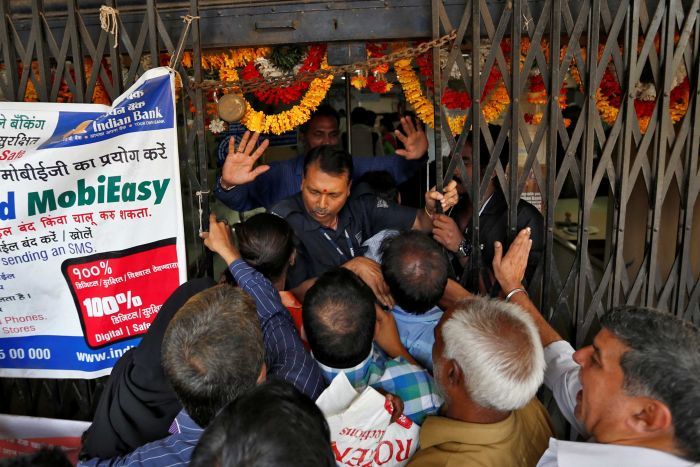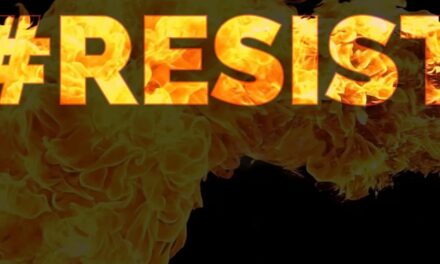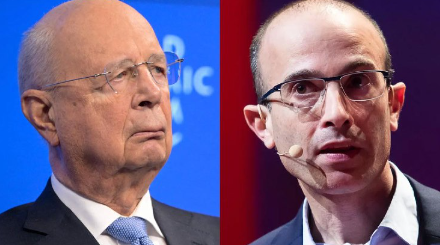Indian banks have called in thousands of police to manage huge queues outside branches, as people tried to exchange bank notes abruptly pulled out of circulation by Prime Minister Narendra Modi in a crackdown on “black money”.
Key points:
- Branch managers called emergency services after people tried to storm the banks
- Overnight this week the 500 and 1,000 rupee notes were abolished as legal tender
- Economists welcome the ‘black money’ crackdown despite it causing widespread disruption
Mr Modi announced the shock move on Tuesday night to ditch 500 and 1,000 rupee notes — worth a combined $334 billion — that he said were fuelling corruption, being forged, and even paying for attacks by Islamist militants against India.
The 500 and 1,000 rupee notes were the country’s two largest bank denominations and are worth about $10 and $20 respectively.
Lines formed before banks reopened after being shut on Wednesday to prepare for the change, as people tried to swap the worthless cash for smaller bills or new 2,000 rupee notes being rushed into circulation and made to be harder to counterfeit.
Some people frustrated by the long wait got into arguments at Canara Bank near the parliament building in New Delhi, as people barged into queues that wound through the branch and on to the street outside.
“Why is there no-one here to manage anything?” shouted one man, as he jostled with others in the line.
Branch manager SK Verma, unable to get through to the local police station, called an emergency hotline for help.
“I want two policemen deputed outside my branch!” he said.
Twenty police stood outside a nearby outlet of the Reserve Bank of India, the central bank, letting in customers a few at a time.
Economists and some businesses, especially those involved in cashless payments, have welcomed the “demonetisation” scheme as a vital step towards broadening the formal economy and improving tax compliance.
But it has disrupted the daily lives of hundreds of millions of Indians who live in the cash economy that is estimated to account for a fifth of India’s $2.61 trillion gross domestic product and who have low confidence in banks or plastic cards.
Although a few people were able to exchange their old money for new notes, there were strict caps on account withdrawals and most came away with bundles of lower-denomination bills.
People were allowed to make a one-time exchange of 4,000 rupees in cash and one-time account withdrawals of 10,000 rupees, capped at 20,000 rupees per week.
Cash dispensers remained closed and were due to reopen on Friday.













